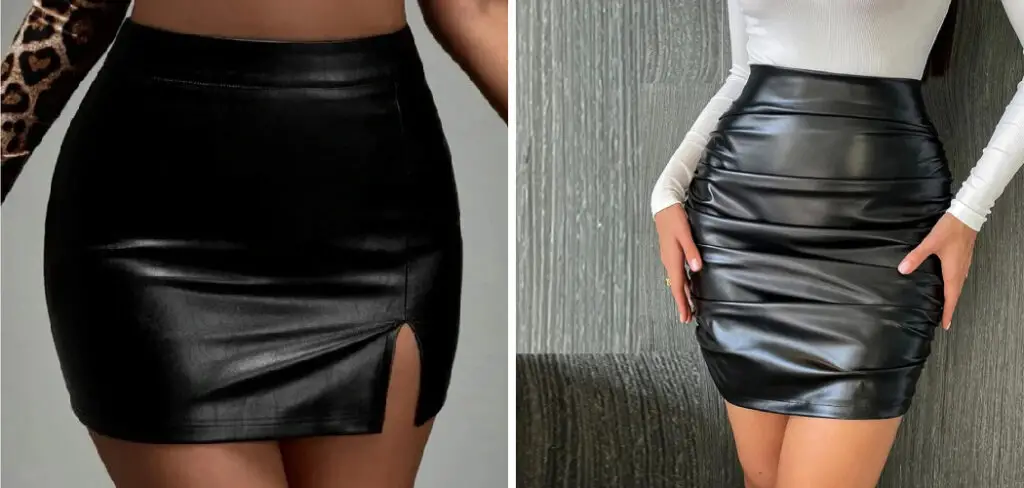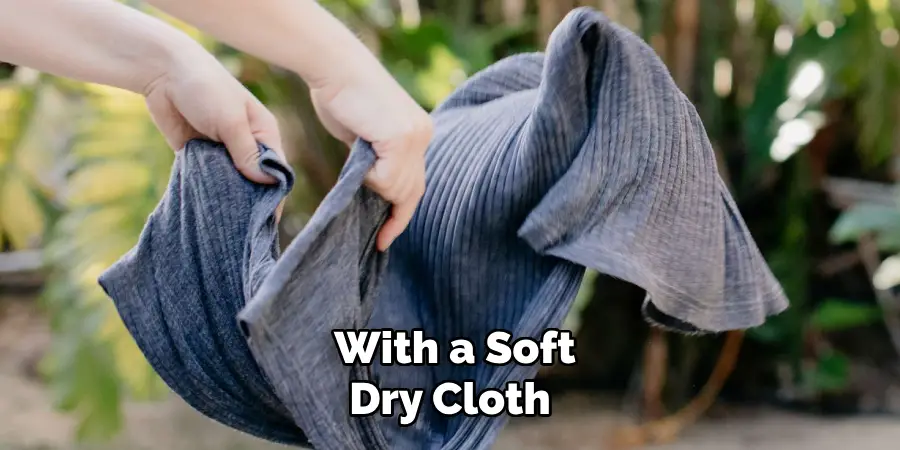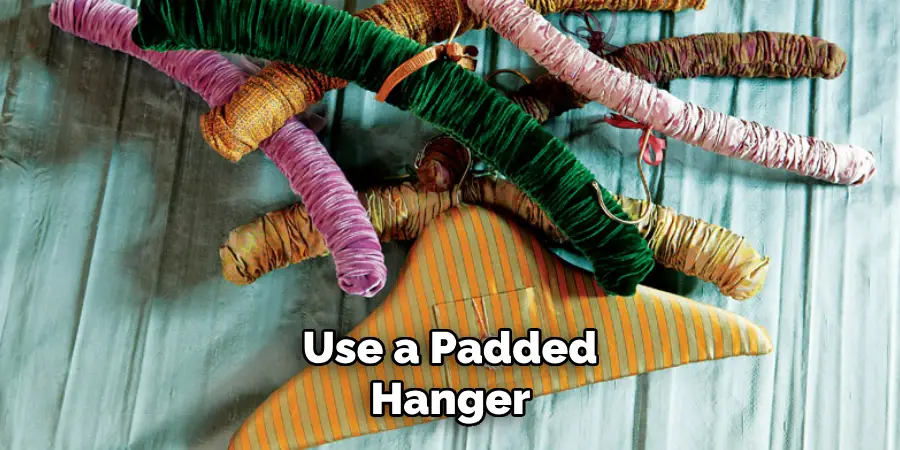Storing a leather skirt properly is essential for preserving its quality and ensuring it retains its shape and texture over time. Whether it’s a sleek pencil skirt or a trendy A-line style, knowing how to store your leather skirt correctly can extend its lifespan and maintain its luxurious appearance.

This guide will outline effective methods for how to store leather skirt, from choosing the right hanger or folding technique to protecting it from environmental factors like light and moisture.
By following these tips, you can keep your leather skirt in pristine condition, ready to wear for any occasion without worry about creases, wrinkles, or damage. Whether you wear it frequently or save it for special events, proper storage ensures your leather skirt remains a staple piece in your wardrobe for years to come.
Importance of Proper Storage
Proper storage of a leather skirt is vital to maintain its aesthetic and functional qualities. Leather is a natural material that can be susceptible to damage from environmental factors such as light, humidity, and temperature fluctuations. Incorrect storage can lead to creases, wrinkles, and even cracks in the leather, diminishing its appearance and reducing its lifespan.
Moreover, improper handling can cause the leather to lose its natural oils, resulting in a stiff and brittle texture. By taking the time to store your leather skirt correctly, you not only preserve its texture and shape but also enhance its durability. This ensures that your skirt continues to make a stylish and elegant statement, no matter how often you wear it.
Benefits of Storing a Leather Skirt Correctly
Storing a leather skirt correctly offers numerous benefits that contribute to the garment’s longevity and aesthetic appeal. First and foremost, proper storage prevents the formation of unsightly creases and wrinkles, ensuring your skirt always looks smooth and polished.
Additionally, it protects the leather from environmental damage such as fading from exposure to light, or mold and mildew growth due to excess moisture. Correct storage also helps maintain the leather’s natural oils, keeping it supple and preventing it from becoming dry and brittle.
Furthermore, by storing your leather skirt appropriately, you reduce the risk of it absorbing unwanted odors or coming into contact with abrasive materials that could cause scratches.
Cleaning Before Storage
Before storing your leather skirt, it is crucial to clean it properly to remove any dirt, oils, or stains that could potentially damage the material over time.
Begin by gently wiping the surface with a soft, dry cloth to remove any loose particles.

For more stubborn stains, use a damp cloth with a mild soap solution, taking care to test a small, inconspicuous area first to ensure the solution does not harm the leather. Avoid using harsh chemicals or soaking the leather, as excessive moisture can lead to damage.
Once cleaned, allow your skirt to air dry naturally, away from direct heat or sunlight, which can cause the leather to become dry and brittle.
10 Methods How to Store Leather Skirt
1. Clean and Condition Before Storage
Before storing your leather skirt, ensure it is clean and properly conditioned. Use a leather cleaner specifically formulated for the type of leather (e.g., lambskin, suede, nubuck) to gently remove any dirt, dust, or stains.
Follow up with a leather conditioner to replenish moisture and restore suppleness to the leather. Allow the skirt to air dry completely before proceeding to prevent mold or mildew growth during storage.
2. Choose a Suitable Storage Location
Select a storage location that is cool, dry, and well-ventilated to preserve the quality of your leather skirt. Avoid areas prone to direct sunlight, as prolonged exposure can cause the leather to fade or dry out.
Opt for a closet with adjustable humidity levels, if possible, to maintain optimal conditions for leather storage. Ensure the storage area is free from excessive moisture or humidity, as these can promote mold growth and damage the leather.
3. Use a Padded Hanger or Fold Carefully
When hanging your leather skirt, use a padded hanger to support its shape and prevent stretching or distortion along the waistband.

Avoid using wire hangers, as they can leave permanent creases and indentations in the leather. Alternatively, if folding is necessary due to space constraints, gently fold the skirt along natural seams or drape it over a padded shelf to maintain its shape.
4. Protect from Dust and Light
Cover your leather skirt with a breathable garment bag or cotton sheet to protect it from dust accumulation and light exposure. Avoid using plastic bags or covers, as they can trap moisture and lead to mildew growth.
The breathable cover allows air circulation while shielding the leather from potential damage. Store the skirt in a dark area or cover it with opaque fabric to prevent fading caused by UV rays.
5. Avoid Compression and Overcrowding
Ensure your leather skirt has adequate space in storage to prevent compression or overcrowding, which can cause creases and permanent wrinkles in the leather. Allow enough room between garments to maintain airflow and minimize friction that could damage the leather surface.
Avoid hanging multiple leather items together on the same hanger, as this can lead to excessive weight and strain on the leather.
6. Monitor Temperature and Humidity Levels
Maintain stable temperature and humidity levels in the storage area to protect your leather skirt from damage.

Fluctuations in temperature and humidity can cause the leather to expand and contract, leading to cracking or warping over time. Ideally, store leather garments in a climate-controlled environment with moderate temperatures and humidity levels to ensure optimal preservation.
7. Rotate and Inspect Periodically
Regularly rotate your leather skirt and inspect it for any signs of damage or deterioration during storage. Check for mold, mildew, or discoloration that may indicate exposure to moisture.
Gently brush off any surface dust or dirt with a soft brush and reapply leather conditioner as needed to maintain the skirt’s suppleness. Rotate the skirt on the hanger periodically to prevent permanent creases and allow all areas of the leather to breathe.
8. Avoid Long-Term Storage in Plastic
Avoid storing your leather skirt in plastic bags or containers for extended periods, as plastic can trap moisture and prevent proper air circulation. Moisture trapped inside plastic can lead to mold growth and cause the leather to become brittle over time. If using plastic for short-term storage or transportation, ensure the skirt is completely dry and aired out before returning it to a breathable garment bag or cotton cover.
9. Consider Climate-Controlled Storage Units
If you lack suitable storage conditions at home, consider renting a climate-controlled storage unit for your leather skirt and other valuable garments.
Climate-controlled units maintain consistent temperature and humidity levels throughout the year, providing an ideal environment for preserving leather and preventing damage from environmental factors. Ensure the storage unit is clean, dry, and free from pests to protect your leather skirt effectively.
10. Handle with Care When Retrieving
When retrieving your leather skirt from storage, handle it with care to avoid unnecessary stress or damage. Gently remove it from the hanger or shelf and allow it to air out briefly before wearing. If wrinkles or creases have developed during storage, gently steam the leather skirt using a handheld steamer or hang it in a steamy bathroom to help relax the wrinkles without applying direct heat.
Things to Consider When Storing Leather Skirts for Long-Term
When planning to store your leather skirts for an extended period, it’s essential to keep several factors in mind to ensure they remain in excellent condition. Leather is a durable yet delicate material that requires specific handling and care. Here are some additional considerations:
Type of Leather:
Different types of leather, such as full-grain, top-grain, suede, and lambskin, have varying needs in terms of care and storage. Make sure to understand the specific requirements for your leather skirt’s material to apply the most appropriate cleaning, conditioning, and storage methods.

Leather Preservation Products:
Investing in high-quality leather preservation products can make a significant difference. Products such as pH-balanced leather cleaners, conditioners, and protective sprays can prolong the life of your leather skirt. Make sure these products are compatible with your specific type of leather.
Seasonal Changes:
Leather can be sensitive to changes in climate, so be mindful of seasonal variations in temperature and humidity. During hot, humid summers or cold, dry winters, leather might need extra care to prevent issues such as drying out or developing mold.
Regular Ventilation:
Even while in storage, it’s beneficial to occasionally take your leather skirt out to air it. This can help prevent odours and allow the leather to breathe, maintaining its natural flexibility and preventing build-up of mould or mildew.
Conclusion
Properly storing your leather skirt is essential to preserving its quality and longevity. By following these meticulous steps—cleaning and conditioning before storage, choosing a suitable location, using padded hangers, and monitoring environmental conditions—you can prevent damage and keep your leather skirt in pristine condition.
Regular inspection and careful handling also play crucial roles in ensuring the leather remains supple and beautiful.
With the right care, your leather skirt can stay a stylish and durable part of your wardrobe for years to come. Thanks for reading, and we hope this has given you some inspiration on how to store leather skirt!

